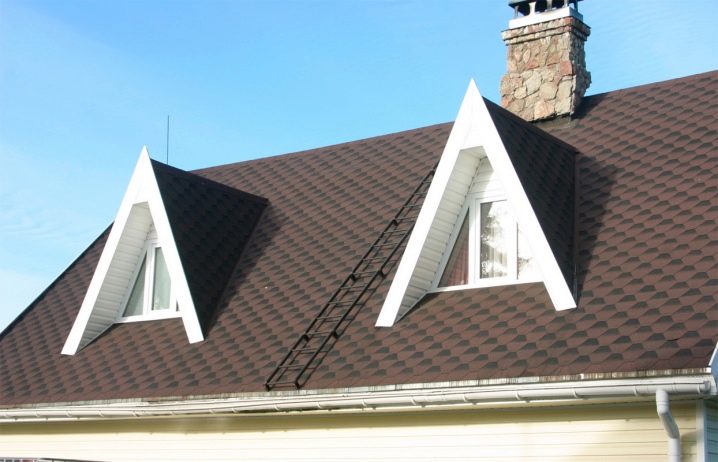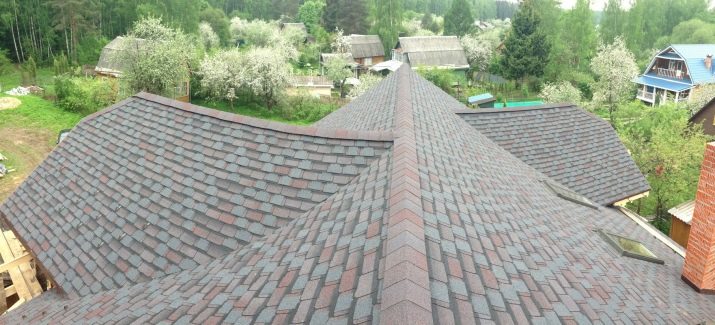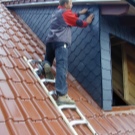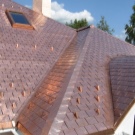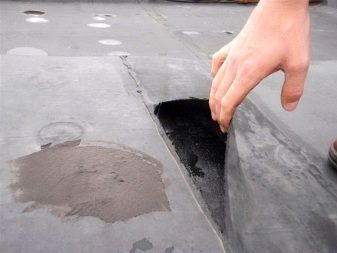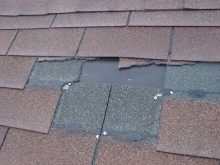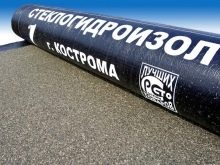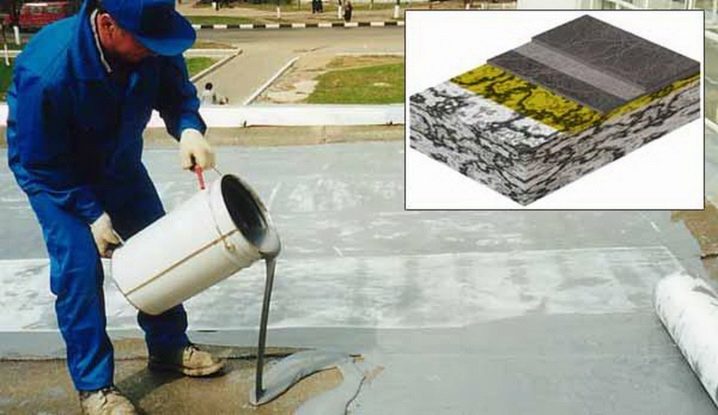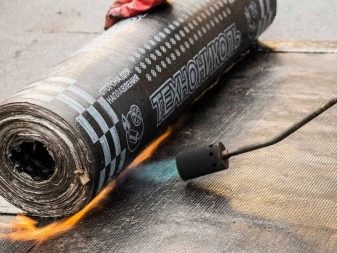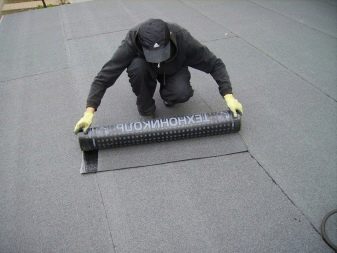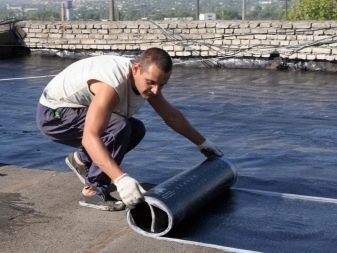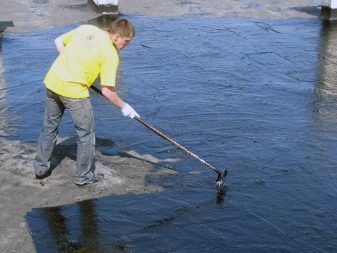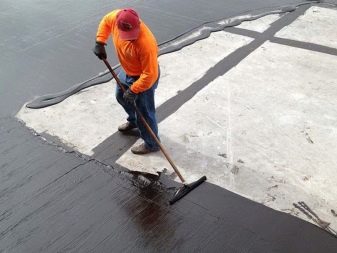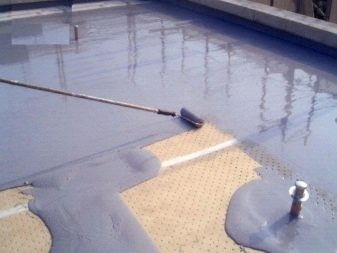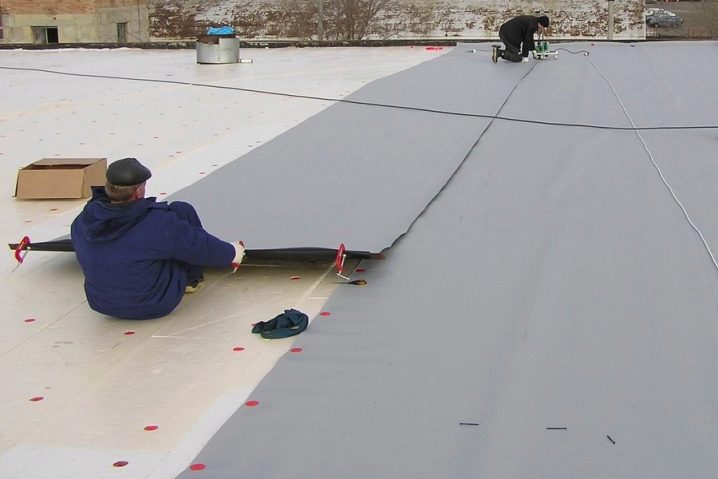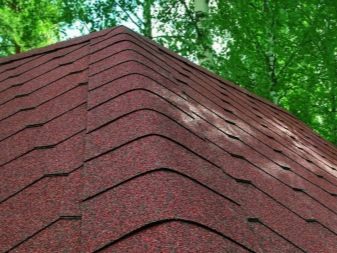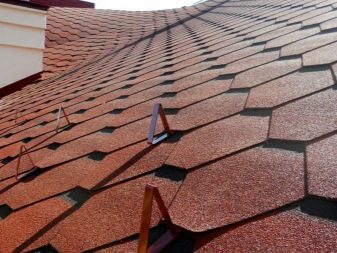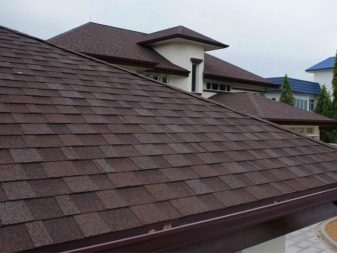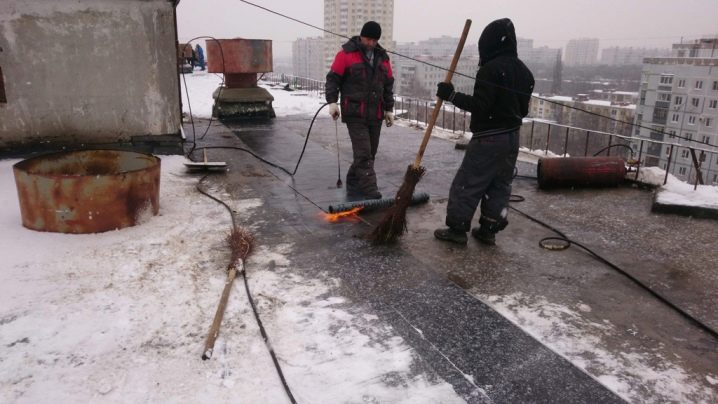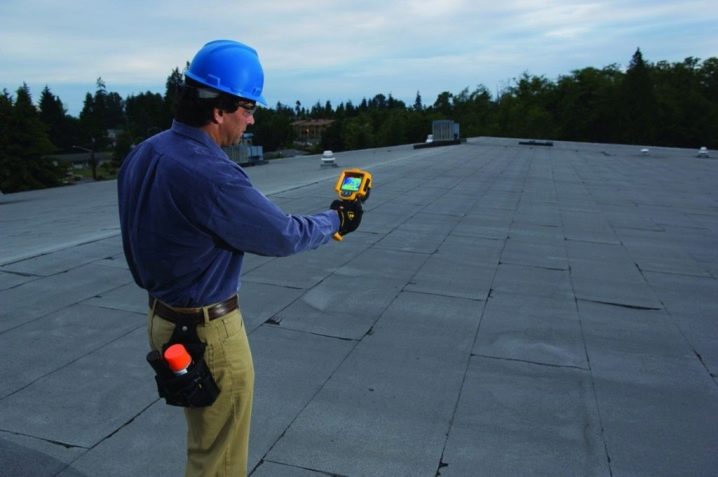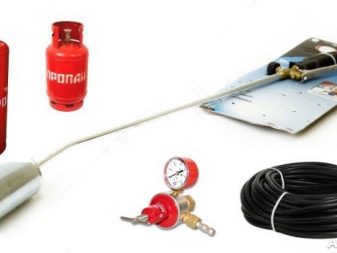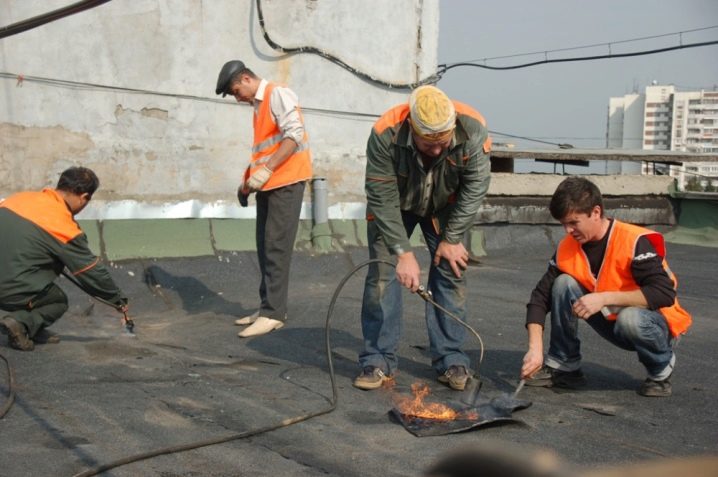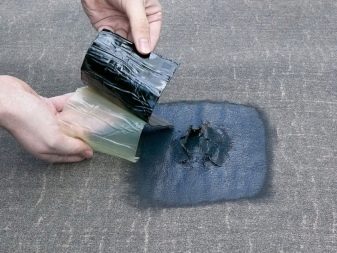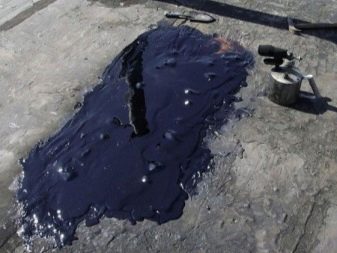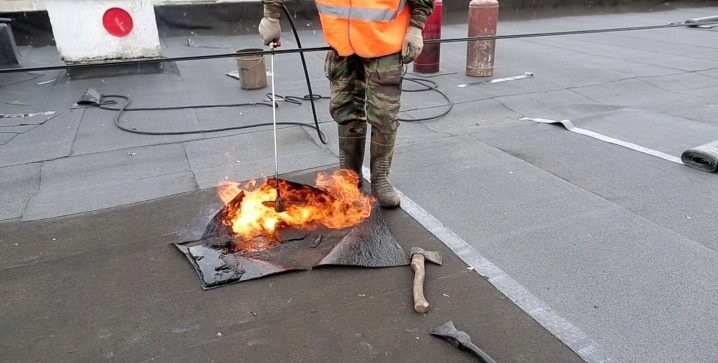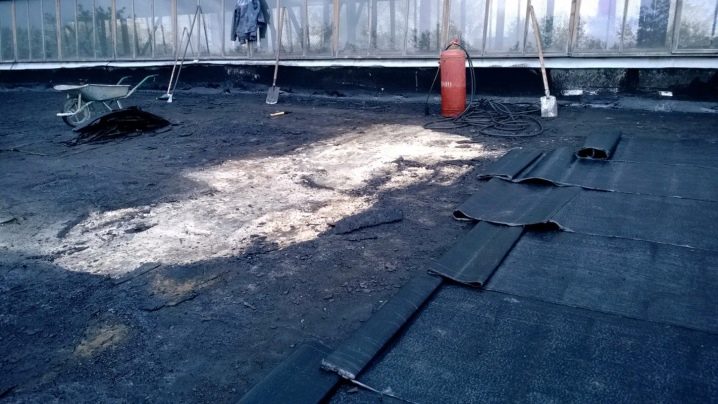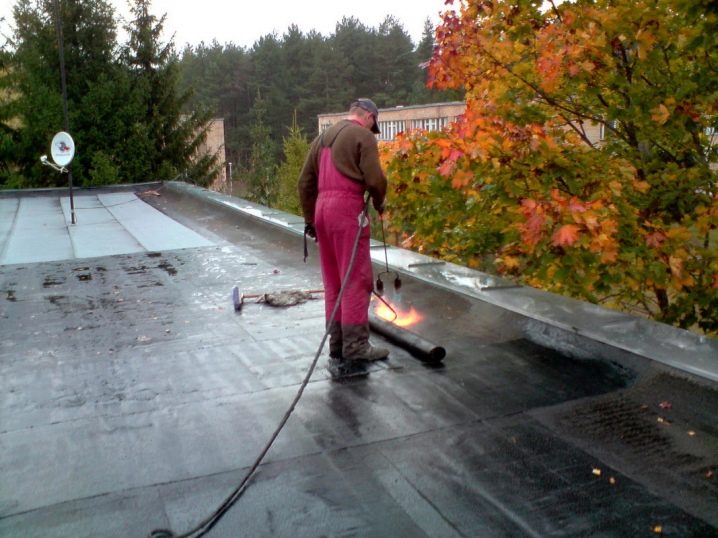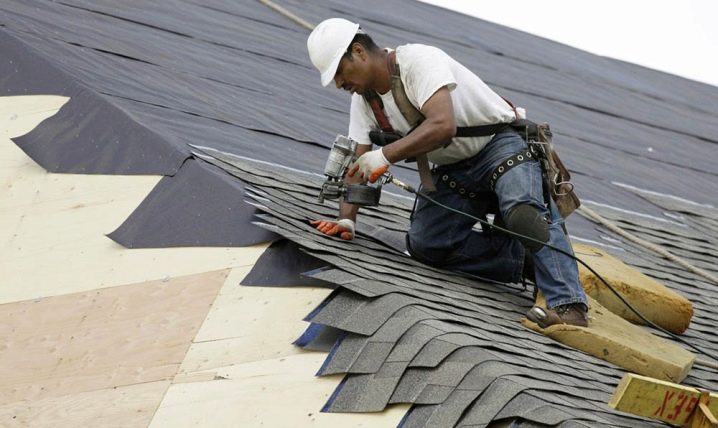Repair soft roof: the choice of materials and instructions for the work
The roof is a top layer of the roof, which is designed to protect the building from the ingress of moisture inside. In the construction of such systems use several types of materials that differ in technical and physical characteristics. Particular attention should be paid to soft roofing materials. They are used on both flat and pitched roofs.
Special features
Soft roofs are constructions of polymeric bitumen materials, which are fixed on a rigid base. The advantage of such materials is a long service life, which can reach 25 years. Soft roofs well protect the grounds from moisture penetration, but not always it happens qualitatively.
Periodically, this type of coating is desirable to check for damage.If it is untimely to reveal defects, it will lead to the appearance of leaks and rapid damage to the roof structure, as well as internal finishing materials. Therefore, it is important to periodically repair soft roofs in order to prevent such nuances.
Repair work is carried out in the presence of one of the following malfunctions on the roof surface.
- Cracks. They appear with very frequent and significant temperature changes. The material simply does not withstand permanent extensions, which leads to the formation of cracks of various sizes. It should be noted that such damage may be even the smallest, but it will allow water to penetrate.
- Mechanical damage. Bituminous coatings are soft and of low durability; therefore, a regular branch or a stone falling on a protective material can form a hole or a gap.
- Breakdowns. This type of damage is relatively rare. They are often caused by strong gusts of wind, which lift up the rolled material, forming gaps or open zones. Special attention should be paid to such injuries, as they may not be immediately visible to the eye.
- Wear. The reason for this phenomenon can only be a long service life.Therefore, the only way to restore such roofs is overhaul.
- Rotting. If the roof is operated in low-quality microclimatic conditions with a large amount of rain, then this leads to the formation of various harmful fungi and microorganisms on it. They eventually destroy the structure of the canvas and lead to the formation of cracks.
Eliminate such damage is possible only through continuous monitoring and repair of small damaged areas. Another reason for the repair may be poor-quality installation. In this case, the basic technologies are not respected, which leads to leaks or blisters.
Design Standards
Construction of any structures is carried out according to a certain state standard. This document regulates the construction of a flat roof. Flat roofs consist of several basic structural elements.
- Insulation materials. In their quality are the built-up rolls or mastics. It should be noted that they are arranged in several layers, which allows you to get a high level of waterproofing pain.Various materials are used as such substances. The most popular are toli, bitumen mastic, roofing felt of various grades, glass ruberoid, etc. All of them have different technical characteristics that influence the final properties of the roof. Depending on the type of roof, from 3 to 6 layers of similar materials are used.
- Gravel. This material is used in most cases for roll materials. Its purpose is to secure the protective sheets. More modern fused roofs may contain similar substances already in their structure: they, as a rule, are glued to the upper layer.
There are many other structural features of soft roofs, which can be found in various standards and regulations. It is also important to take into account the fact that each of these types of substances is intended for operation in certain conditions.
Types of flooring
Flat roofs are distinguished by a minimum slope, which does not allow for very effective moisture removal. Therefore, this surface must be completely sealed to prevent moisture from entering the system.The solution to this problem are soft roofs, which are obtained from bitumen and various polymer components.
Depending on the composition and method of application, flooring is divided into several types.
- Roll materials. The main material here is bitumen, which is reinforced with polymers or fiberglass. Manufacturers produce multi-layered sheets, but they all have a bottom layer. When exposed to high temperature or special solutions, the material melts and becomes liquid. This makes it easy to fix it with a prepared base. One of the simplest varieties of this group is roofing material. But it is used to protect roofs very rarely, since polymeric substances are much stronger than similar products.
- Mastics. This type of material is often called liquid rubber. Products consist also of bitumen components and various auxiliary additives. Put it on the basis of a spray or bulk method. In practice, this type of roofing is very similar to the previous type, but differs in the method of coating. To improve the technical parameters between the layers of liquid bitumen can be placed various reinforcing inserts (glass fiber mesh, etc.).Among the advantages of this coating can be identified completely sealed surface on which there are no seams. But applying liquid rubber with a uniform layer is not so simple, which does not always guarantee the reliability of the protective coating.
- Roll membranes. This is a kind of polymeric materials that are made from various chemical components. The basis of these products are special mesh, which is attached protective material. Most types of membranes are fixed to the base of the roof only with the help of special types of glue.
- Shingles. This type of roofing is used on pitched roofs. The structure of such products is very similar to rolled substances, but they are released in small pieces, for fixing which high temperatures or special adhesive solutions are used. For additional protection, the upper layers of artificial shingles can be covered with small abrasive chips, which change the design of the coating, giving it originality and practicality.
Optimal season
Bituminous roofing materials are highly plastic.They are able to sinter in a single unit when heated to certain temperatures. Often, such substances are able to withstand only positive values. Qualitative modifications are easily destroyed at sub-zero temperatures (below -35 degrees). In this regard, repair of roofs in the winter is not recommended.
Such operations are carried out in the winter only in a few cases.
- Damage to roofing due to wind or blizzard. Please note that this may include only significant damage.
- Roof deflection. Often this applies to pitched modifications where shingles are used. Flat roofs made of reinforced concrete floors can easily withstand heavy snow, but it is important to constantly monitor the quality and strength of the roof.
- A large number of cracks, which lead to the formation of leaks during the thaw period.
Experts do not recommend carrying out repairs in winter at temperatures below -15 degrees. This procedure is carried out only in extreme cases. The optimal interval for restoring soft roofs can be from warm spring to warm autumn.It is important to give the materials completely dry. Do not carry out repairs also in the rain, as it does not work out to form a strong and monolithic connection between the joined components.
Training
Repairing a soft roof is not such an easy task, as it seems at first glance. Such operations should be started with several preparatory operations.
- Damage analysis. Before you repair the surface, you should find out the location of leaks. In most cases, they are formed at the junction points of the vertical elements, as well as between the joints of reinforced concrete slabs. Particular attention should also be paid to the end elements that can be damaged by the wind. Based on the information received, a small repair project is being compiled. To do this, calculate the cost of repairing the identified damage. In this way, you can determine if the surface needs partial or major overhaul.
- Buying equipment. Repair work is performed on the same principle as the installation was carried out. Therefore, to solve such problems, you will need a gas burner, a gas cylinder with a gearbox and a hose of a certain length. Cutting and sealing rolls carried out with the help of special spatulas and knives.If the damage is significant, you may also need additional waterproofing material, as well as cement mortar.
Ways to eliminate leakage
Repair of the roof, covered with soft materials, is reduced to applying similar in composition products on top of the roof. It is quite simple to carry out such operations with your own hands - the main thing is to choose the right quality materials for termination and stock up on the necessary tools.
Consider the technology of repairing soft roofs, depending on the type of damage.
- Cracks and small holes. To repair such damage is relatively simple. Initially, the surface of the roof is thoroughly cleaned from dust and other debris. After this, the gap is filled with liquid rubber or hot bitumen. It is desirable that these solutions are similar in composition to the material used for the coating. To evenly distribute the adhesive composition, you can use the coating: a patch is applied over the bitumen mastic and smoothed it with a special roller. It is important here that the size of the patch is 10–15 cm larger than the hole.If the roof is built-up, then you can put a patch of the same material on top of the old one. It is simply heated and applied to the cleaned surface.
- Split joints. Here the same algorithm is applied as in the first case. But before repairing the damage, it is advisable to lift the sheets, thoroughly dry and clean all the joined surfaces. It is important that there is not a lot of debris beneath them, which can impede the restoration of the surface - this is especially important for an old roof that can quickly collapse. The application of liquid bitumen here is carried out both under the sheets themselves and on top of them. If the inner layers are also damaged, it is advisable to cover this place with an additional patch of a certain size.
- Swollen. Eliminate these shortcomings can be done by making a cut crosswise. It is necessary to dry the canvas, revealing them. After that, the inner surface is covered with bitumen mastic. Then the pieces are applied to the base and carefully smoothed. If necessary, the cut is closed with a sintering method or filled with hot bitumen mastic.
As patches are very often used materials on a bitumen basis, among which isoplast. Some varieties of such substances can be heated by infrared radiation, which simplifies and speeds up the work. However, isoplast coating is rarely used.
Particular attention should be paid to the overhaul of soft roofs.
- First, the old coating is dismantled. If the design is represented by a combination of two houses, then it is desirable to carry out similar operations on both roofs. If it is impossible to perform such a task, it is necessary to ensure minimal damage to the second half.
- After this, the base of the roof is cleaned. It is desirable to completely remove all debris in order to be able to assess the technical parameters of the coating and improve adhesion during installation.
- If the base has already been laid roofing pie, you need to check its condition. In the case of a large amount of damage, this layer is also desirable to remove and lay a new one. When thermal insulation is not supposed, then it is necessary to evaluate the condition of the base.If it is concrete slabs, all cracks and cracks are eliminated with the help of cement mortars. When the plane has significant differences, then you need to level them with a tie.
- The process ends with the installation of a soft roof. The technology of its installation is very similar, which makes it possible to consider it on the example of rolls being deposited. Initially, the roof surface is covered with a special primer, which improves adhesion. After this, a twisted roll is placed on the floor. Installation begins on one side of the roof. To do this, the lower layer of the sheet is heated with a burner, and when it becomes liquid, the roll is rolled, pressing the material to the base. Such actions are performed sequentially. Particular attention should be paid to the joints between the vertical and horizontal surfaces.
Particular attention should be paid to polymeric membrane materials. Their repair by the “hot” method implies the availability of special equipment. Theoretically, it also heats the material, but for its high-quality operation you need to have certain skills. Therefore, the implementation of the soldering membrane sheets is better done with the help of special adhesive solutions.
Pro tips
Repair of a soft roof allows you to maintain its technical characteristics in a reliable condition.
In its implementation, experts recommend to follow a few simple rules.
- Carry out all work very carefully so as not to damage the roof frame itself. This is especially important for wooden structures, which are applied shingles.
- Dormer windows and ventilation ducts should preferably be treated with a single roll of material. This minimizes the number of joints through which water can penetrate. Use for such works special non-woven materials based on lavano-viscose.
- If there are drawdowns, it is desirable to eliminate them. This can be done using asphalt-concrete solution, which is placed on the site of damage. Apply a new layer of bitumen or roll-up roll can be only after the mixture is completely dry.
- Observe the slope during repair work. Very often, you can install a patch in such a way that it will be a barrier to water.
- If the roofing material cracks at the points of junction with vertical surfaces, you need to separate the layer and install a bevelled corner in the corner. It will smooth the transition and will not allow the material to break so quickly.
- Carefully check the entire surface of the roof. Damage detection is not always easy here. This is due to the fact that the main hole can be under the upper layers of sheets that pass water through small holes.
Repair of a soft roof is a fairly simple process, requiring only care, knowledge of technology and the use of high-quality roofing materials. You can carry out the work yourself, but still for greater confidence in high quality it is better to entrust them to professionals.
How to repair the soft roof with your own hands, see the following video.

